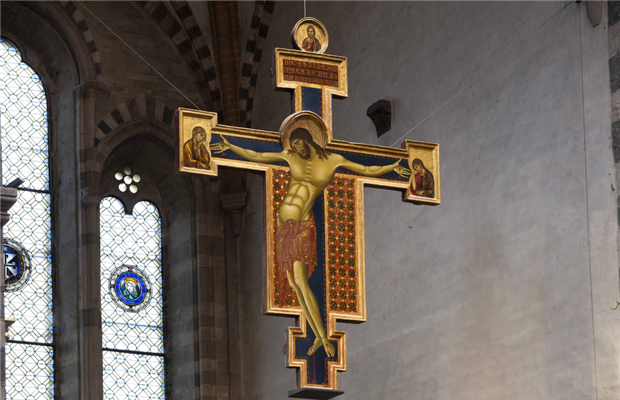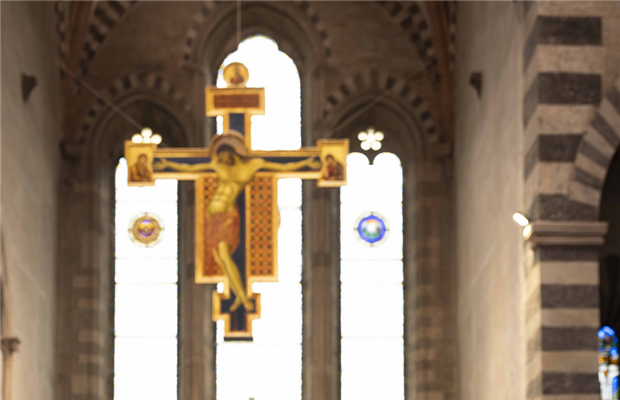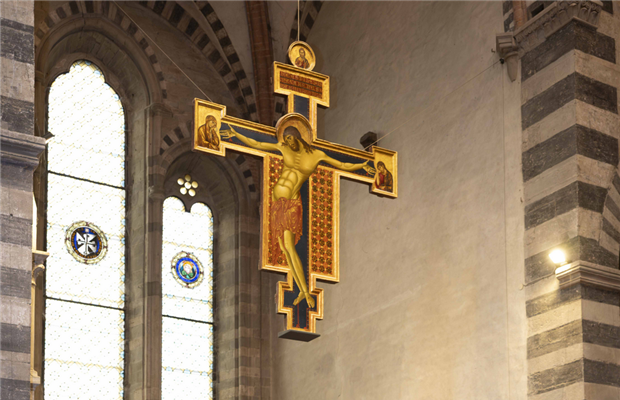The sacred beyond faith: unveiling the secrets of Menarini’s Art Volume on Cimabue

A distinguished forerunner of the Renaissance and author of works that paved the way for a more realistic and human depiction of the sacred, Cimabue is the great master featured in this year’s Menarini Art Volume, presented in Arezzo.
In the second half of the 13th century, the talent of this eminent figure in painting marked his era and the centuries to come, introducing innovations that stand out even in the famous Crucifix of the Church of San Domenico in Arezzo. It was precisely in front of this masterpiece that art historian Miriam Fileti Mazza - professor for forty years at the Scuola Normale Superiore in Pisa - introduced the latest monograph of the Menarini Group’s art series to the public. The volume, published by Pacini Editore, was also presented by art historian Liletta Fornasari, who invited attendees to rediscover the history and splendor of the majestic Gothic basilica.
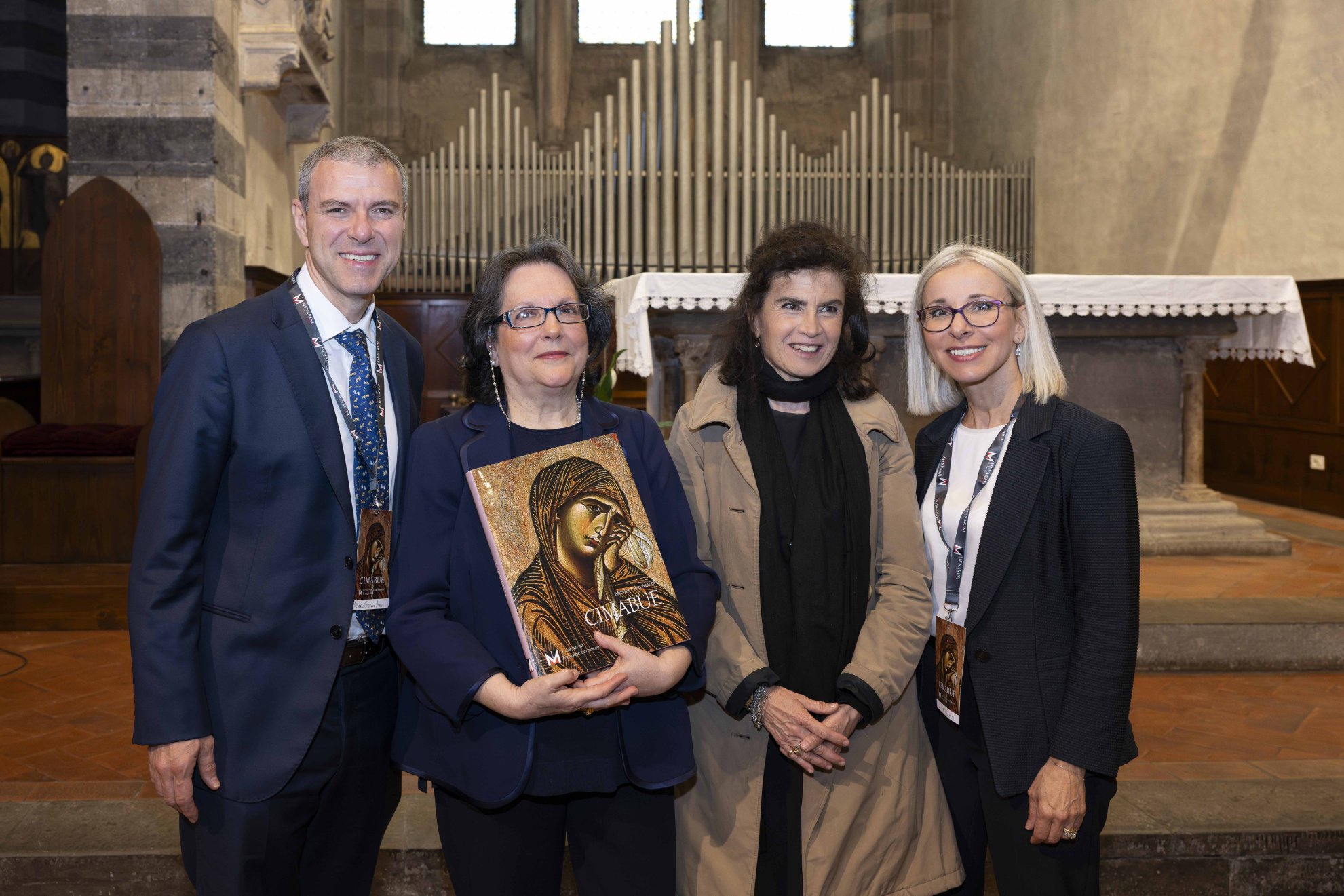
Alberto Giovanni Aleotti (shareholder and member of Menarini Board), Miriam Fileti Mazza (author of Volume d'Arte Menarini about Cimabue), Liletta Fornasari (art historian) and Lucia Aleotti (shareholder and member of Menarini Board) during the presentation of the Volume d'Arte Menarini about Cimabue at the Church of San Domenico, Arezzo
“With the essential nature of a silent harmony, Cimabue was able to move and guide the viewer towards a sense of spirituality beyond any creed or dogma”, stated Miriam Fileti Mazza. “The Menarini Art Volume on this great master traces the visual story of one who, departing from primitive Byzantine painting, paved the way towards new art that would lead to the Renaissance. Though distant in time, his painting reclaims perception, still offering mystery, naturalness, and the ancient charm of its origins”.
From Botticelli to Caravaggio, from Leonardo da Vinci to Raphael: every year since 1956, Menarini has continued to its custom of Art volumes, bringing to light the extraordinary masterpieces of Italian art.

Menarini Art Volume about Cimabue
“Carrying on the tradition of the Menarini Art volumes means cultivating beauty as part of daily life”, said Lucia and Alberto Giovanni Aleotti, shareholders and members of the Menarini Board. “For over half a century, these monographs, distinguished by their simple language, have made art accessible even to those who never imagined they could fall in love with it”.
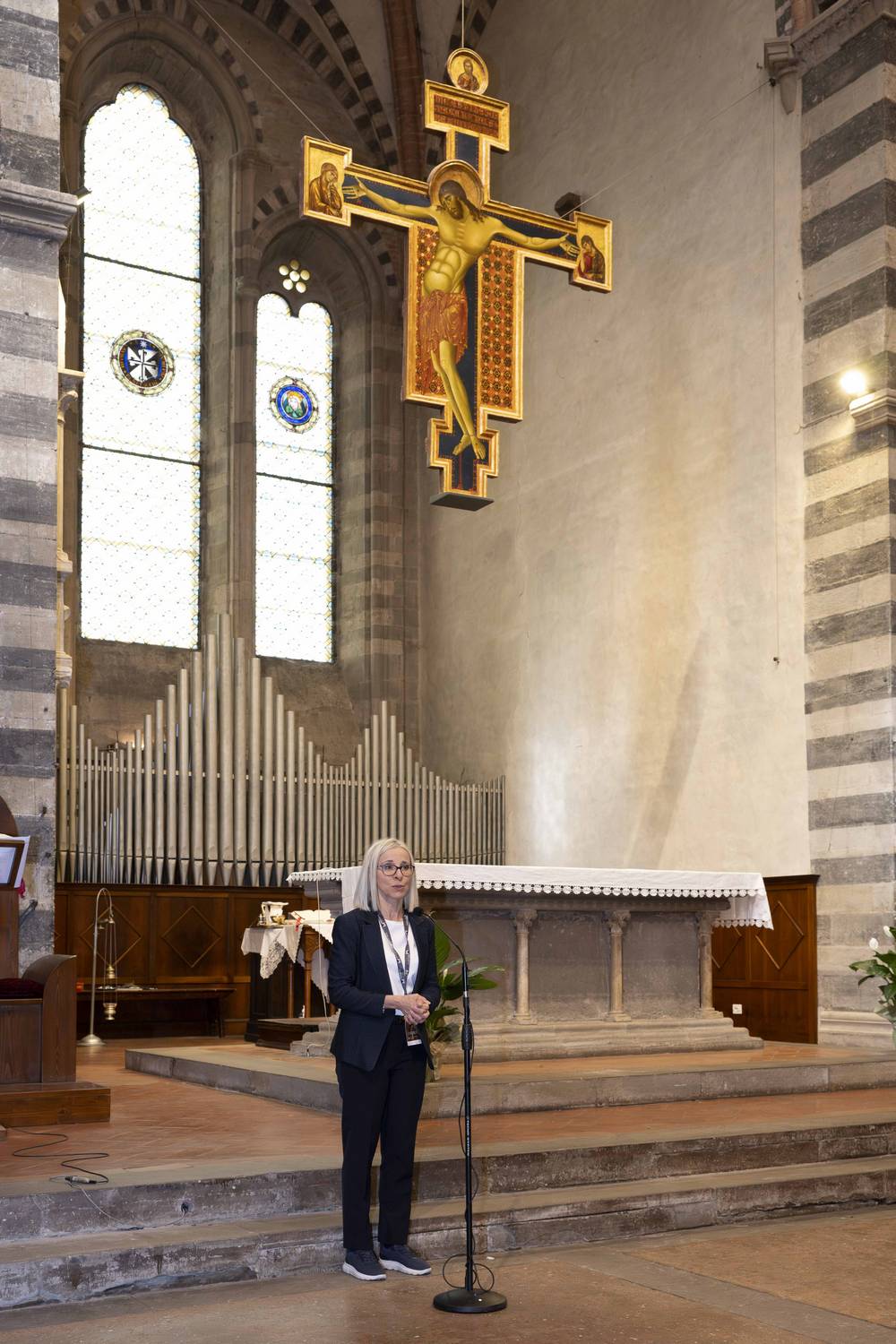
Lucia Aleotti
Over time, the Group’s artistic vocation has evolved into the multimedia project Menarini Pills of Art, short video clips where experts share anecdotes and curiosities about the works featured in the Art Volumes. These videos are available on Menarini’s YouTube channel in eight languages.
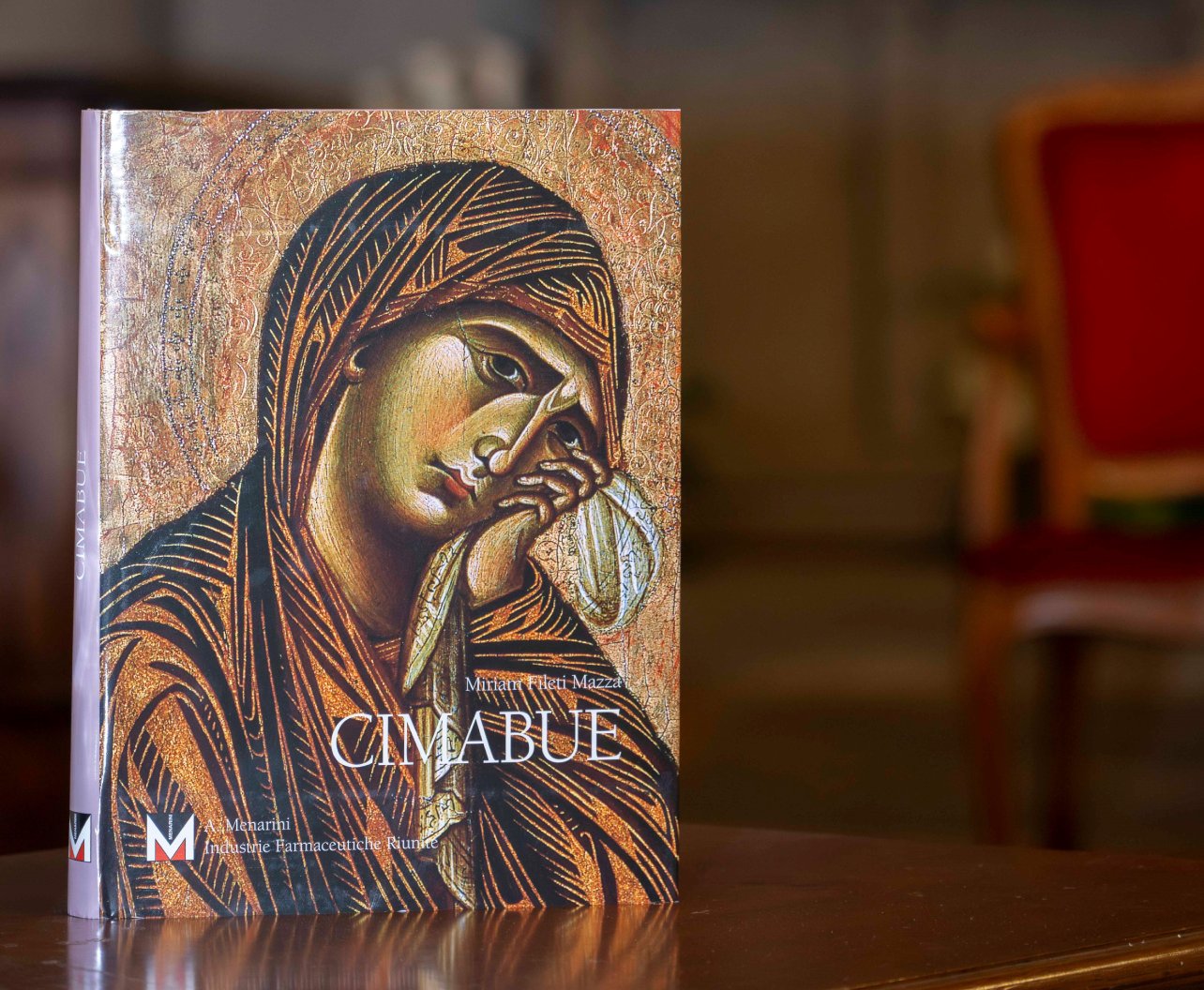
Menarini Art Volume about Cimabue
CIMABUE, LIFE AND WORKS
An artist of whom we know nothing through documented sources, Cimabue was likely born in Florence around 1240 under the name Bencivieni di Giuseppe, nicknamed Cimabue. His training is attributed to Coppo di Marcovaldo, the most renowned painter of the time. His death is believed to have occurred in 1302, based on rare written accounts. Very few of his works have reached us with certainty; studying his art has been challenging due to the poor preservation conditions - sometimes appalling - such as in the case of the frescoes in Assisi, where the once bright white lead turned to dark grey due to oxidation, compounded by natural disasters like floods or earthquakes. Yet the expressive power of Cimabue’s art has prevailed over misfortune, and the narrative of Faith in his works still conveys the revolutionary shift towards the naturalism later embodied by Giotto.
CHURCH OF SAN DOMENICO (AREZZO)
Cimabue’s first work, dating to around 1270, is a painted wooden Crucifix in tempera and gold, placed high above the main altar of the Gothic Church of San Domenico in Arezzo. The site, consecrated as a minor basilica by John XXIII only in 1960, is a treasure chest of artistic heritage that spans from the early 14th century to the 16th. Its construction was funded by the noble Arezzo families of Ubertini and Tarlati. In January 1276, while still partially completed, the basilica hosted what would become the first papal conclave in the history of the Roman Church.
























